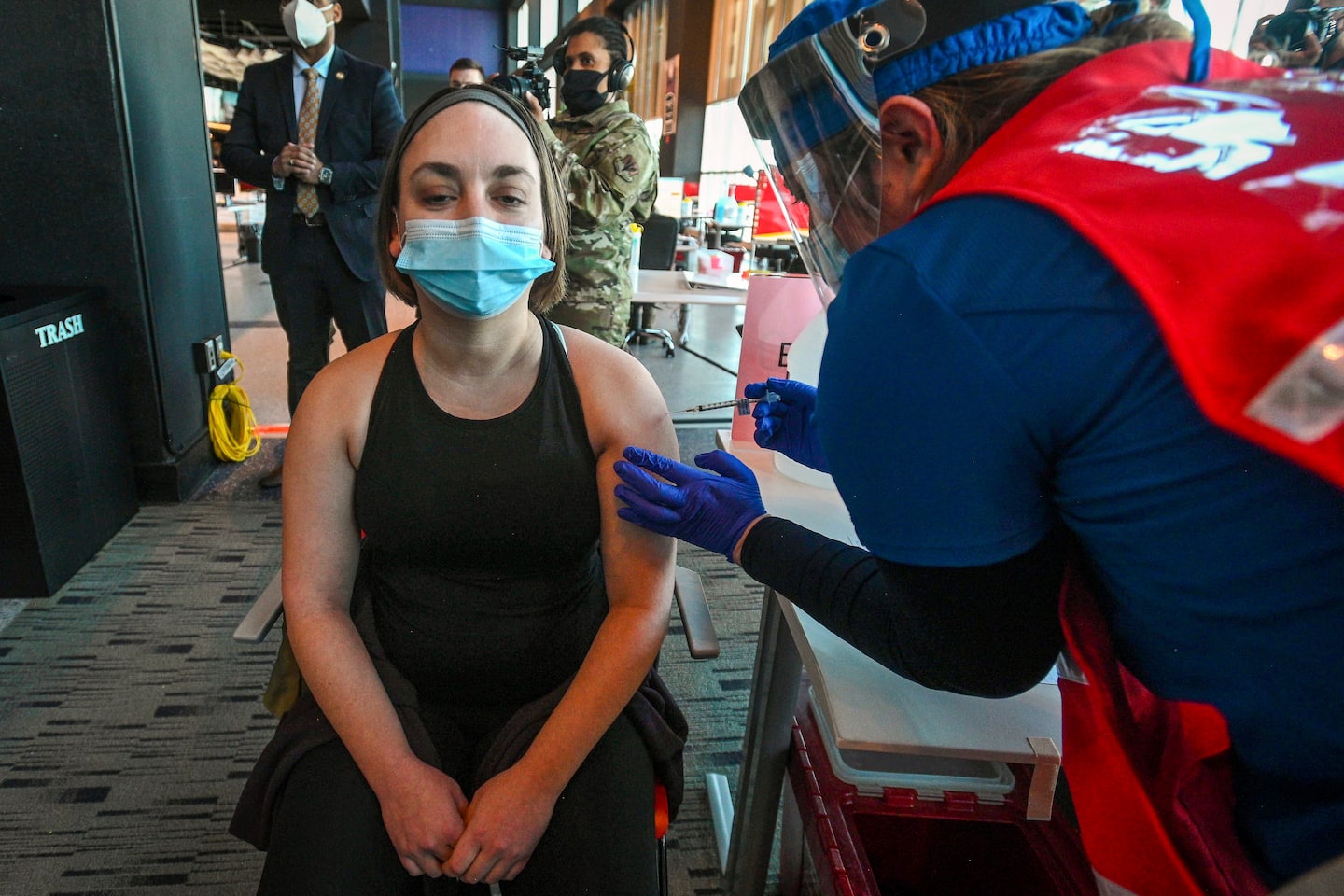Hogan can’t explain away Maryland’s vaccine inequities. He needs a plan to fix them instead.

When the goal is equity but the reality is nearly fourfold variation, there’s a problem. In Maryland, this problem has a racial dimension. Counties with high vaccination rates are predominantly White. Those with lower rates are more likely to have larger populations of color. By our calculation based on the state health department data, White Marylanders are being vaccinated at a rate more than twice than that of Black Marylanders, and only around 4 percent of inoculations have gone to Latinos.
These statistics demand an explanation — and a plan. Unfortunately, Gov. Larry Hogan (R) has responded with a series of perplexing statements that neither shed light on what’s happening nor reflect a commitment to fixing the problem.
First, when asked in January about under-vaccination in areas with large minority populations, Hogan stated, “This is not an issue of not enough supply in those areas. It’s about convincing people to take it.”
Yet the reality on the ground does not support this. From the start of vaccine distribution, demand has far exceeded supply in every corner of Maryland. In Baltimore City, community and church leaders had to set up their own informal hotline to help older residents desperate to locate vaccines. In Prince George’s County, elected officials have been deluged with calls from stressed and frustrated constituents, with more than 100,000 people signing up for vaccination.
Hogan subsequently suggested he wanted to send more vaccine to places that have been able to vaccinate faster. The implication is that certain counties may be sitting on vaccines, rather than using them. But the state itself is controlling where the vaccines are sent within counties and has not released data about specific holdups in vaccinations. Since the state is taking responsibility for distribution, Hogan’s team should make its tracking public, identify delays and fix them.
On Friday, Hogan tried a third time to explain the under-vaccination of certain counties. He asserted that “as of last week, Baltimore City had gotten far more than they really were entitled to.” The governor did not share data to justify this astonishing statement, nor did he address how it might even be possible for Baltimore to receive excess vaccine and yet have a vaccination rate among its residents lower than that of every one of its surrounding counties.
What little information the state has released suggests a fundamental flaw in the state’s strategy. The state divides a county’s vaccine allotment among multiple distribution points, including the local health department, pharmacies and hospitals. But hospitals in Maryland serve the whole state and are not equally distributed. When Baltimore’s 11 acute-care hospitals vaccinate patients who live throughout the region, there is less vaccine available for city residents.
To be clear, the mistake here isn’t giving vaccines to Baltimore hospitals. It’s counting those vaccines against Baltimore City’s allotment. Because the city is predominantly African American, this policy decision has built racial inequity into the state’s plan for vaccine distribution.
Hogan must remedy the situation quickly. An immediate step is transparency, specifically to post data about where the state has sent vaccine and information on the population receiving the vaccines at each site, including their residential Zip code, race and age. The state should also stop counting hospital distributions against counties and begin to report hospital vaccinations separately.
Critically, the state should manage the vaccination rollout to achieve its own stated “top priority” of equity. Maryland is beginning to do just this in Prince George’s County, by reserving a large share of the doses at the Six Flags site for county residents. The state should do the same for mass vaccination sites within Baltimore City.
In addition, Maryland should support innovative programs to reach individuals in great need who cannot navigate the state’s piecemeal scheduling system. This includes scaling up the efforts of the Baltimore City Health Department to send mobile vaccination teams that are doing door-to-door outreach. The state should also direct new allocations directly to federally qualified health centers and primary-care providers in hardest-hit neighborhoods with the least access to vaccine.
Policymakers in Maryland and around the country should take note: There is no justification for pointing to vaccine hesitancy when the real problem is vaccine access. Rapid and equitable vaccination must be the goal when the enemy is an infectious disease that will remain a threat as long as people are left behind.
Read more:






